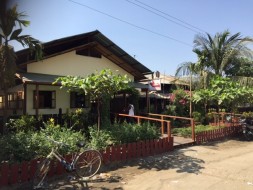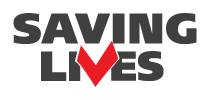
 In a bus station sweating profusely, drinking excellent Myanmar beer having survived the first week, eaten every local street food that looks edible and suffered the consequences and now about to start on a 10-hour overnight bus journey to Bagan, home of the temples (picture). Now I have been and worked in many places but this is a reminder to anyone who reads this, health care professional, patient, or surfing bored blog-reader, how fortunate we all are in the West.
In a bus station sweating profusely, drinking excellent Myanmar beer having survived the first week, eaten every local street food that looks edible and suffered the consequences and now about to start on a 10-hour overnight bus journey to Bagan, home of the temples (picture). Now I have been and worked in many places but this is a reminder to anyone who reads this, health care professional, patient, or surfing bored blog-reader, how fortunate we all are in the West.
So why am I here? Having had my mini-fanfare of farewell speeches from North Manchester after what I calculated with low grade A-level maths to be around 27 years of loyal Consultant service to the public’s cherished NHS and my most beloved patients and colleagues, I have dusted down my stethoscope and swopped looking important to the wake-up call of being a jobbing doctor again. After a couple of weeks’ holiday attempting for at least the twentieth time to master the basic art of skiing, I headed out to work for a medical charity called Green Shoots Foundation whose mission include s providing staff and resources to educate and assist in HIV care in Myanmar. I work under the umbrella of Medical Action Myanmar (MAM) who run several clinics in Myanmar, four in Yangon, and an expansive project of outreach care around the country. More of their activities later.
s providing staff and resources to educate and assist in HIV care in Myanmar. I work under the umbrella of Medical Action Myanmar (MAM) who run several clinics in Myanmar, four in Yangon, and an expansive project of outreach care around the country. More of their activities later.
So, what’s it like? They say it’s going to hit 40oC and first-degree burning hot and so top of the range strength sun-block is a must (picture). After only a day working in the clinics you begin to understand two key things: the intense pressures that the staff work under and the fluid-sapping shirt-soaking conditions (picture). Attached are a couple of pictures of one of the clinics that’s in the outskirts of Yangon (pictures). Amazingly in the clinic, there are over 4000 H IV patients and 500 children with HIV being cared for in this clinic alone and in total around 7,500 in all four clinics in Yangon, three times the number back home in Manchester which we considered to be a ‘large’ unit. Given the local Burmese doctors also have to deal with a staggering amount of TB and anything else that comes in from the street, they earn their weekly wage many times over and work their proverbial socks off, although flip-flops are the de-rigeur footwear.
IV patients and 500 children with HIV being cared for in this clinic alone and in total around 7,500 in all four clinics in Yangon, three times the number back home in Manchester which we considered to be a ‘large’ unit. Given the local Burmese doctors also have to deal with a staggering amount of TB and anything else that comes in from the street, they earn their weekly wage many times over and work their proverbial socks off, although flip-flops are the de-rigeur footwear.
For those of you who have embarked on climbing the rungs of the HIV ladder, here’s what I can tell you so far (any non-medics can skip this paragraph!). Imagine a clinic where most patient have weights of <45kg, CD4 counts of <100 and where there are very limited diagnostic facilities. Hence, when it comes to managing HIV, no baseline viral load, no resistance test, just a CD4 count. As for what is available, you can have a Hb, malaria film, AFB smear, and hepatitis B and C, HIV, Dengue fever, and syphilis done there and then in the clinic. Everything else must be sent away including GeneXpertTB test (with rifampicin resistance), CD4, CSF’s, and biochemistry. You do not come in to work, log onto a computer, and access the wealth of information available as you do back home: most tests cost a lot of dosh and except for USS (reports questionable anyway) not available. CXR’s are available at a nearby hospital but not of the best quality.
For those with a CD4 count of <100 you can get a rapid urine test f or TB diagnosis (LAM if you’re in the know). So, most patients have TB (some MDRTB and occasionally XDRTB) often hand-in-hand with their HIV yet half the patients are going to be smear/GeneXpertTB negative so trying to pick out the lymphoma, PCP, lung cancer, pneumonia, or even sarcoidosis is incredibly difficult and many patients go onto empirical TB therapy – and then get drug-induced hepatitis! Other common HIV opportunists include cryptococcal meningitis, penicilliosis (now irritatingly renamed by the taxonomists as talaromycosis), and CMV retinitis – all of which have come into the day centre in the last week.
or TB diagnosis (LAM if you’re in the know). So, most patients have TB (some MDRTB and occasionally XDRTB) often hand-in-hand with their HIV yet half the patients are going to be smear/GeneXpertTB negative so trying to pick out the lymphoma, PCP, lung cancer, pneumonia, or even sarcoidosis is incredibly difficult and many patients go onto empirical TB therapy – and then get drug-induced hepatitis! Other common HIV opportunists include cryptococcal meningitis, penicilliosis (now irritatingly renamed by the taxonomists as talaromycosis), and CMV retinitis – all of which have come into the day centre in the last week.
So, I now understand how the clinics work and what is coming in through the door, a necessity before you can try and help by using your experience and what skills you have, if as I begin to ponder, any! We will see what happens next but what strikes you immediately is how antiretroviral drugs have changed lives, families, and communities and brought hope where there was none (pictures). As for where I live, it’s in the centre of Yangon sharing a small flat with two very young volunteers also working for MAM: a German doctor and a young Brit taking time out of his consultancy training! Getting used to mosquitoes again, the lack of air conditioning in my room, and multiple interruptions to power which alas means no water!! As for the bus to Bagan, I now just need to find the right one!

